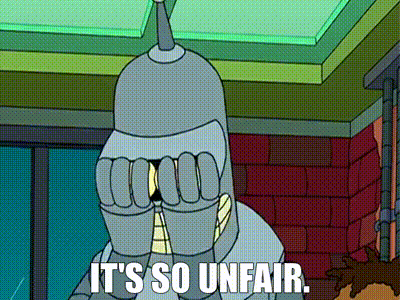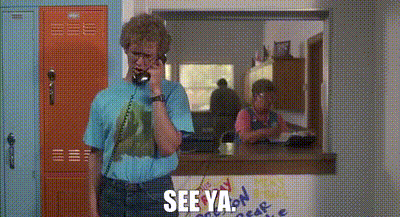Bye Bye TikTok, Boring Phones & Main Characters
5 in 5 - Brave & Heart HeartBeat #201 ❤️
This week we will obviously be discussing the beginning of the end of TikTok, as the bell tolls giving ByteDance nine months to either sell, or hit the road, and how that will affect creators and businesses across the globe.
Plus, the deepfakes have already begun, and we look at the re-emergence of your old phones and how to be the main character in your work day.
Let’s get into it.
Were you forwarded this? Not a subscriber? 👉 Sign up here
#1 - TikTok - The Beginning Of The End
It’s official, the “anti-TikTok” law was passed in congress this last week. The “sell or ban” law means that TikTok have nine months to divest from their Chinese owner ByteDance before being banned nationwide.
And according to Wired magazine, whatever happens, TikTok will never be the same again.
There are a few ways it could play out. ByteDance have announced that they have no intention of selling, but if they DID, would it be with or without the algorithm?
Microsoft have expressed interest in buying the platform, but if ByteDance do sell, it might just be the bones of the platform without the brain behind it – the legendary algorithm.
Whatever their team, or anyone else, manage to reengineer from scratch, even though it may have the same name, won’t be TikTok as we know it.
If no buyer is found, or accepted, Americans will have to say goodbye to TikTok within the next year. So, what does that leave them with? YouTube Shorts and Instagram Reels, but again, the only thing they have in common is the format.
Let’s not worry too much about that just yet though, because TikTok seem to be pretty confident that they can overrule the ban as “unconstitutional”.
#2 – What About Us?
That’s only in the US, so in the UK we won’t be affected at all, right? Wrong.
Shutting down TikTok in the US would see the app lose over 150 million users, and that means 150 million consumers for people and businesses across the globe, whether they work as a content creator or use TikTok to drive customers to their websites.
In the last few years thousands of people have quit full-time employment to become content creators, and the removal of the app in the US will have the ripple effect of essentially firing those people from their full-time jobs, while also having the knock-on effect of wiping out millions of views from others.
Many content creators rely on brand deals to earn money on the platform, but how much will those brands be willing to spend on the remaining creators if the US market is completely unreachable? It looks like Instagram may clean up when it comes to influencer brand deals if TikTok does leave the US.
Alongside content creators, many small businesses rely on TikTok to reach customers, about 150 million of which may well disappear in the next year. The platform has allowed many businesses to blow up, including in the UK, reaching a global audience and in many cases, turning hobbies or “side hustles” into full-time jobs.
Now what? Sure, there’s Instagram, but without the power of the algorithm small businesses and content creators are less likely to reach their niche audience, and the Instagram model allows the biggest influencers and brands to get bigger.
Smaller creators and businesses might have to start looking for a plan B in the 250 days between now and TikTok’s US doomsday.
In a story that sounds like the beginning of a small-town murder mystery TV movie, or a series of Fargo, a high-school athletics coach has been arrested for AI-fuelled misdeeds.
The coach used an AI voice replication tool (the exact tool used has not been confirmed) to create a recording of the principal of the school making racist and antisemitic comments, which was circulated on social media, in an attempt to get the principal fired.
His motive? The principal was pursuing investigations into the mishandling of school funds. Sounds like an episode of CSI just before one of them murders the other.
Experts consulted during the case described the audio as suspicious due to it’s “flat tone, unusually clean background sounds, and lack of consistent breathing sounds or pauses” and evidence against the suspect included records showing that he had used school computers to access OpenAI tools and Microsoft Bing Chat services.
The suspect was charged with theft, disturbing the operations of a school, retaliation against a witness, and stalking, because, drumroll, pretending to be the principal via voice technology is not illegal.
US lawmakers have filed several bills like the No Fakes Act and the No AI Fraud Act to try and prevent the use of an individual’s face, voice, or name without their permission, but none have yet been passed.
We look forward to the episode of Law and Order based on this crime, coming soon, probably.
#4 - Introducing The Dumphone
Well, we say introducing, most of you have already met them.
The dumbphone is the new alternatve to the smarphone, and what used to be called, well, a phone.
Unveiled at Milan design week this month, the new version of our beloved Nokia 3310 is “The Boring Phone” – a new, featureless flip phone created in collaboration between Heineken beer and fashion brand Bodega.
While born into a world with screens, Gen Z are rebellng against the “always on” lifestyle and dreaming of simpler times, when a phone was just a phone, not the key to all information that exists in the world and comes flooding in before your eyes at all hours of the day.
One 29-year old proponent of the dumbphone states whatsapp read notifications as one of the reasons they prefer using a featureless phone – the idea that someone has read your message and chosen not to reply is just not something we necessarily need to know. When it comes to being in constant contact with others, or constantly reachable, sometimes it’s more stress than it’s worth.
Apple are apparently not under threat just yet though, as nine out of ten phones are still smartphones, and the dumbphone remains niche. However, there is evidence that the newest generation are modifying the way they use their phones, with three in five en Zers saying they’d like to be less connected to the digital world.
While a nice idea, it would be pretty difficult in our current world to live without a smartphone – from parking apps to train tickets, almost everything has an app, and in some cases there is no analogue way to carry out a task anymore.
Is the answer a smartphone for your parking apps and dumphone for texting?
#5 - Should You Be Romanticising Your Work?
If you don’t spend a lot of time on TikTok, which might be all of us soon, you may not have heard of the “romanticising” your life trend.
Similar to the “main character” trend, it entails “revelling in life’s simple pleasures” like your first sip of coffee in the morning, listening to music while making dinner, and, apparently, answering emails.
In her new book “Lucky Girl: Unveiling The Secrets Of Manifesting A Lucky Life” Georgie May (who definitely sounds like she romanticizes things) sings the praises (probably literally, surrounded by woodland animals) of using this mindset as a beneficial tool for getting through the tougher days at work.
She rightly notes that as our brains have a negativity bias because we’re programmed to focus on potential threats, it can be easy to overlook the positive aspects of our jobs, especially during those periods where it really feels like a grind.
So how can we use the romanticize theory to put some joy back into the work day?
1 – Gratitude. Yes, it’s all very American, but research has shown that daily gratitude practices offer real mental health benefits. You can take it into the workplace by noting down things you’re grateful for such as a stimulating project, a recent accomplishment, or the satisfaction of completing a task. Consciously acknowledging the positives of your work can shift your focus and outlook.
2 – Bring mindfulness into the day. Consider scheduling five to ten minutes of mindfulness into the day, like meditation, breathing exercises or listening to music. Again, a bit hippy dippy but they do always seem to be in a good mood.
3 – The “light the candle” theory. This is a theory based on spacial association, where neuroscientists have found that dedicated ‘work zones’ can help improve productivity. May argues that creating a workspace that “sparks joy” and “surrounds you with inspiration” can help you romanticise your work day.
Picture a well organised aesthetically pleasing desk, with inspirational quotes jumping out at you and stylish desk accessories reminding you what a stylish high-flying working person you are. Feel motivated? You should do.
It might sound a little bit like playing make-believe, but if you need all the help you can get to get through a tough work week, why not give it a go.
Brave & Heart over and out.
Bonus
Miss AI
The worst thing to come out of the AI boom, and that’s saying something.
Miss AI is a beauty pageant for AI generated women, and stereotypes and unrealistic beauty standards abound, how surprising.
We wonder how many of them were made by women?
To find out more on how you can retain your top talent, or how we can help you with digital solutions to your business and marketing challenges, check out our case studies.



